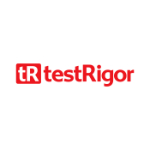List of Best Automation Testing Tools
Showing 10 of 111 productsLoadNinja is a dynamic load testing tool designed to help enhance software performance and ensure optimal user experience. With its advanced capabilities and user-friendly interface, LoadNinja simplifies load testing processes while providing accurat...Read LoadNinja Reviews
BrowserStack is a highly efficient and versatile tool designed to help developers and businesses worldwide test their websites and applications on multiple devices and browsers with ease. With its reliable cross-platform functionality, BrowserStack i...Read BrowserStack Reviews
Testsigma is a software solution for your testing needs. With its user-friendly interface features, Testsigma streamlines the testing process and guarantees faster and accurate results. Say goodbye to tedious manual testing and embrace the efficient...Read Testsigma Reviews
Eggplant, your go-to software for seamless automation of software testing. With Eggplants intuitive interface technology, you can ensure efficient and error-free testing of your applications. Designed to simplify your testing process and enhance prod...Read Eggplant Reviews
Perfecto is more than just a name, its a promise of perfection. Designed by experts in the field, our innovative software combines powerful features with real-time analytics to provide the ultimate testing and monitoring solution for web and mobile a...Read Perfecto Reviews
Appium is a open-source automation tool designed specifically for testing mobile applications. With its user-friendly interface and cross-platform capabilities, Appium is a highly sought-after choice for mobile app development teams. This innovative...Read Appium Reviews
ACCELQ is a groundbreaking software that revolutionizes the way organizations manage their testing and automation processes. With its intuitive features and user-friendly interface, ACCELQ streamlines testing to increase efficiency and accuracy. Desi...Read ACCELQ Reviews
testRigor is a software solution designed to streamline your testing process and improve your overall software quality. With its intuitive interface features, testRigor is changing the game for software testing. Say goodbye to manual testing and hell...Read testRigor Reviews
Ranorex is a software tool designed for automated testing of desktop, web, and mobile applications. It offers a user-friendly interface, advanced features, is a testing capabilities, making it a top choice for software testing professionals. With int...Read Ranorex Reviews
Sauce Labs is a leading software testing platform that helps businesses of all sizes deliver high-quality digital experiences to their users. With its robust suite of tools and unmatched expertise, Sauce Labs empowers teams to test and optimize their...Read Sauce Labs Reviews
- What Is Automation Testing Tools?
- Top Reasons Why Businesses Need Automation Testing Tools?
- What Are the Top Key Features of Automation Testing Tools?
- What Are the Top Benefits of Automation Testing Tools?
- What Are the Steps to Choose the Right Automation Testing Tools?
- What Are the Types of Automation Testing Tools for Different Industries?
- What Are the Technology Trends for Best Automation Testing Tools?
- What Are the Deployment Options for Automation Testing Tools?
What Is Automation Testing Tools?
Automation testing tools refer to computer programs that are employed to execute tests on various software applications. Automated testing is generally characterized by its superior speed and efficiency compared to manual testing, especially in cases when tests need to be executed repeatedly.
Top automation testing tools are advantageous for software testers as they facilitate time-saving by enabling the execution of tests in a rapid and precise manner, particularly those that can be repeated multiple times. A wide range of the best automation testing tools are currently available, each specifically tailored to address various testing requirements.
For instance, certain tools are employed for the purpose of conducting unit testing, whereas others are utilized specifically for functionality testing. Furthermore, the utilization of fuzzing techniques can be employed for the purpose of conducting security testing, whilst the application of mock frameworks can be employed for the purpose of conducting integration testing.
Automation tools are equipped with integrated reporting features that offer convenience to testers by providing a rapid comprehension of the results obtained from their tests. In general, the utilization of the best automated testing software technologies has the potential to yield cost reduction, enhanced efficiency, and heightened software quality.
Top Reasons Why Businesses Need Automation Testing Tools?
1. The automation of laborious and iterative manual processes linked to software testing.
2. One of the advantages of implementing automated testing is the potential to save expenses by eliminating the requirement for costly manual testing efforts.
3. One of the primary objectives of software development is to reduce the occurrence of defects and errors within the code.
4. Quality assurance is achieved through the process of testing code extracts and executing regression tests.
5. One of the benefits of this technology is its ability to enhance productivity by delivering outcomes that are both efficient and precise.
6. One of the key benefits of centralizing test results is the facilitation of collaboration between teams.
7. The implementation facilitates the streamlining of the script authoring process for automated tests.
8. Facilitates enhanced communication between the testing team and the development team.
9. One important aspect in the testing of various iterations of software programs is the maintenance of consistency.
10. The utilization of this approach improves the ability to scale and respond to evolving demands in a timely manner, hence enhancing scalability and flexibility.
11. Facilitates enhanced portability and ensures uniformity when conducting tests across diverse environments.
12. One notable advantage of this approach is its ability to improve the efficiency of performance testing, hence facilitating the identification and resolution of software bugs.
13. One benefit of parallel testing is the ability to execute many tests simultaneously, resulting in a reduction of time required for testing cycles.
14. One benefit of utilizing monitoring systems is the ability to effectively track the performance of applications, enabling the swift identification of any deviations from expected performance levels.
15. This feature improves the level of security and expedites the identification of any potential malicious or security-related vulnerabilities inside the code.
What Are the Top Key Features of Automation Testing Tools?
1. Record and Playback function: Automation testing solutions provide the capability to record and replay user actions, hence enhancing ease and enabling the repetition of test scenarios. This technology facilitates the automation of recurring test situations, resulting in expedited test execution.
2. Object Identification and Object Repository: Automation solutions has the capability to detect and categorize items present on a webpage, afterwards storing them in an object repository for subsequent utilization. This feature facilitates convenient retrieval of elements across several webpages for the purpose of doing automated testing.
3. Effort Reduction: Automation testing technologies have the capability to decrease the amount of time and effort required for doing manual tests. This practice contributes to the mitigation of software testing expenses.
4. Data-driven Testing: the best automation testing tools enable the implementation of data-driven testing, which involves the utilization of external data sources to feed data into the test script, rather than manually coding the data within the script. This accelerates the procedure of evaluating many test scenarios within a reduced timeframe.
5. Cross-platform Compatibility: Top automation testing tools provide extensive compatibility with diverse platforms and technologies, encompassing online, native, and hybrid applications.
6. Comprehensive Reporting: The best automation testing tools produce detailed results on test execution that provide useful insights into issues and facilitate effective decision-making.
7. Reusability: Automation testing solutions facilitate the utilization of identical test scripts and code across many situations, platforms, and applications, hence simplifying the testing process. This facilitates the expeditious implementation of tests and conserves both time and effort.
8. Integrated Support: The best automated testing software offers comprehensive support, encompassing tools for configuration management, defect tracking, and real-time analysis, which provide enhanced insights into the process of test automation.
What Are the Top Benefits of Automation Testing Tools?
1. Increased Test Coverage: Automation testing solutions facilitate the expansion of test case coverage for testers. The purpose of these technologies is to enable the concurrent execution of several test cases, hence enabling testers to do a greater number of tests within a certain time period.
2. Improved Accuracy: The best automation testing tools provide a level of accuracy that is challenging to achieve by human means. Additionally, these tools have the potential to greatly diminish errors and faults that may arise during manual testing.
3. Reduced Testing Costs: Automation technologies play a crucial role in mitigating the expenses linked to manual testing through the elimination of manual labor and reduction of test duration.
4. Improved Test Consistency: Top automation testing tools is a practice that aims to maintain consistency in the execution of tests across multiple iterations. Automation is not effective when the anticipated result of a test case differs from the actual result.
5. Automation Reusability: Automation technologies enable testers to execute identical test scripts many times using varied inputs. This approach effectively minimizes the duration of test execution while simultaneously guaranteeing the maintenance of precision.
6. Reduced Human Intervention: Top automation testing tools serve the purpose of eliminating the requirement for manual involvement during the development and execution of test scripts. The aforementioned approach significantly decreases the duration of development and execution processes, leading to enhanced precision.
7. Efficient Debugging: The best automated testing software have the capability to aid in the process of debugging by offering comprehensive reports that precisely identify the specific places where failures occur. This facilitates the process of debugging, enhancing efficiency and expediting bug identification for testers.
What Are the Steps to Choose the Right Automation Testing Tools?
1. Identify the purpose of automation testing: Prior to the selection of any automation testing technology, it is vital to ascertain the objective of the automation testing procedure. This entails comprehending the extent, objectives, and sector of the endeavor.
2. Evaluate the automation tool requirements: The automation testing method encompasses diverse requirements and objectives. Once the goal of automation testing has been identified, it becomes crucial to conduct a thorough analysis and evaluation of all the requirements pertaining to automation tools.
3. comparison between different automation tools available: There exists a wide array of automation testing tools that are readily accessible in the industry and can be effectively utilized within the automation testing procedure.
The comparison and evaluation of the features of each automation tool is a crucial task in order to determine the most suitable and cost-effective option for the project.
4. Determine the cost effectiveness of the tool: The cost of best automated testing software might be relatively high. It is imperative to ascertain whether the expense of the tool is justified by the anticipated advantages. Prior to making a purchase, it is imperative to thoroughly evaluate the features, scalability, and licensing costs associated with the product.
5. Assess the security features: It is imperative that automation testing solutions include a sufficient level of security in order to safeguard sensitive data from unauthorized access. The evaluation of the security attributes of the tool is crucial in order to ascertain its capability in providing sufficient safeguard against external vulnerabilities.
6. Consider the technical support offered: The consideration of technical assistance provided by the vendor plays a significant role in the selection process of an automation testing tool. The evaluation of available assistance alternatives and their alignment with project objectives is crucial.
7. Understand the limitations of the tool: Prior to making a purchase, it is crucial to have a comprehensive understanding of the constraints associated with the automation testing product. Determining the tool's potential for integration inside the preexisting framework and assessing its compatibility with the present platforms are crucial considerations.
8. Evaluate the future development: The creation of best automation testing tools is an ongoing process that necessitates careful consideration of future development plans. Ensuring that the tool is equipped with the most up-to-date capabilities is of utmost importance.
What Are the Types of Automation Testing Tools for Different Industries?
The selection of automation testing technologies varies significantly between industries, mostly influenced by the varying complexities of the software employed within each sector.
In various industries, there are several best automated testing software that are frequently employed.
1. Cross-platform automated graphical user interface (GUI) testing technologies such as Selenium and Appium.
2. TestRail, a type of software used for managing test cases.
3. Performance testing tools such as LoadRunner and JMeter
4. Mobile application testing technologies, such as Eggplant and TestFlight, are widely utilized in the software development industry.
5. Automated application programming interface (API) testing tools such as Postman and SoapUI
6. Automated security testing tools such as Veracode and HP WebInspect
7. Database automation solutions, such as Liquibase and DbDeploy, are utilized to streamline and facilitate the process of managing and deploying database changes.
8. Cloud automation testing solutions, such as CloudTest and AWS Device Farm, are widely utilized in the software industry.
These tools enable developers to automate the testing process in cloud environments, hence enhancing efficiency and scalability. It is imperative to acknowledge that there exists significant variation in the tools utilized across different sectors.
Consequently, it is advisable to conduct thorough study in order to choose the most appropriate tool for a certain business.
What Are the Technology Trends for Best Automation Testing Tools?
The significance of automation testing has grown considerably for organizations of varying sizes, serving as a means to enhance test coverage and expedite the release process. Most popular automation testing tools are utilized by firms to eradicate the need for manual testing and instead deliver outcomes that are both efficient and precise.
There is a prevailing inclination in the field of automation testing tools towards solutions that prioritize continuous testing and provide enhanced integration with test management and CI/CD technologies. Cloud-based solutions are gaining popularity due to their capacity to scale and reduce costs in comparison to on-site solutions.
The utilization of AI-powered automation tools is increasingly prevalent in this domain, as they provide cognitive capabilities for test development and optimization across many platforms. DevOps-driven testing solutions are increasingly being embraced by enterprises, enabling the automation of various jobs across the development process.
What Are the Deployment Options for Automation Testing Tools?
The process of deploying most popular automation testing tools generally consists of three main stages: environment setup, test automation package development, and test execution. The environment setup encompasses the installation of essential software on the test machines, including the automation tool, test data, and relevant libraries.
1. Developing a Test Automation Package: The automation package refers to a bundled assortment of data and components designed to facilitate the execution of tests. The package may comprise many components such as object maps, configuration files, software libraries, data files, test scripts, and user-defined functions.
2. Test Execution: The process of executing tests entails the activation of the automation package and the test scripts using the provided information, including the specified date, time, and intended actions. The automation program subsequently gathers the test results and delivers them to the user.
The aforementioned procedures constitute the standard protocol for deploying automated testing tools. Nevertheless, it is important to note that distinct tools may exhibit variations in terms of their execution procedures, setup requirements, and construction methods.










